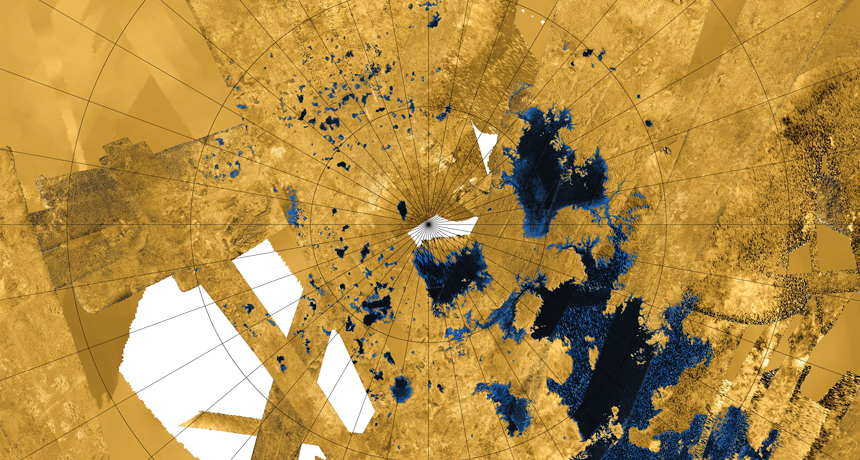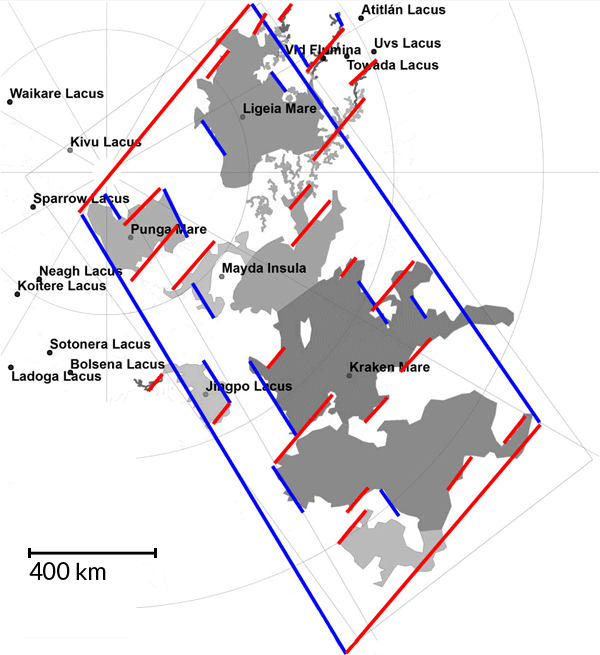Sinkholes, tectonics may have shaped Titan’s lakes and seas
Map of Saturn’s largest moon reveals clues about landscape

TITAN TECTONICS Titan remains mysterious but this new mosaic image suggests that tectonic activity and sinkholes created seas and lakes (blue-black) near the moon’s north pole. Using radar data collected by the Cassini spacecraft, scientists pieced together this picture of Saturn’s largest moon.
JPL-Caltech/NASA, ASI, USGS








